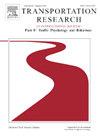Drivers’ perceptions of improving official information and road rules for distracted driving: Enhancing content, design, and delivery
IF 3.5
2区 工程技术
Q1 PSYCHOLOGY, APPLIED
Transportation Research Part F-Traffic Psychology and Behaviour
Pub Date : 2025-02-17
DOI:10.1016/j.trf.2025.02.012
引用次数: 0
Abstract
Distracted driving continues to be a significant risk to road safety. While effective legislation and education are essential for preventing distracted driving, there is evidence showing that current official information and road rules related to distracted driving may not provide drivers with a comprehensive understanding of the issue. Therefore, this study aimed to explore drivers’ perspectives on how official information and road rules could be improved to effectively address distracted driving. Semi-structured interviews were conducted with 35 drivers from Queensland, Australia, with thematic analysis employed to extract key themes from the discussions. The results showed that official information on distracted driving could benefit from more comprehensive content, including underrepresented distraction sources (e.g., using a smartwatch, interacting with passengers, and looking at advertisement billboards), the safety risks, and impacts on driving performance. Participants emphasised the need for distracted driving legislation to address the risks posed by a broader range of technological devices (e.g., infotainment systems, wearable devices), not just hand-held mobile phones. The results suggested a need for improved presentation of information, with future distracted driving content suggested to be presented visually, along with more targeted messaging for high-risk drivers such as young drivers. Further, social media, short training, and outdoor media were perceived by participants as the most effective delivery mechanisms for distracted driving resources. The findings provide valuable guidance for policymakers in establishing and communicating information and road rules for distracted driving.
求助全文
约1分钟内获得全文
求助全文
来源期刊
CiteScore
7.60
自引率
14.60%
发文量
239
审稿时长
71 days
期刊介绍:
Transportation Research Part F: Traffic Psychology and Behaviour focuses on the behavioural and psychological aspects of traffic and transport. The aim of the journal is to enhance theory development, improve the quality of empirical studies and to stimulate the application of research findings in practice. TRF provides a focus and a means of communication for the considerable amount of research activities that are now being carried out in this field. The journal provides a forum for transportation researchers, psychologists, ergonomists, engineers and policy-makers with an interest in traffic and transport psychology.

 求助内容:
求助内容: 应助结果提醒方式:
应助结果提醒方式:


